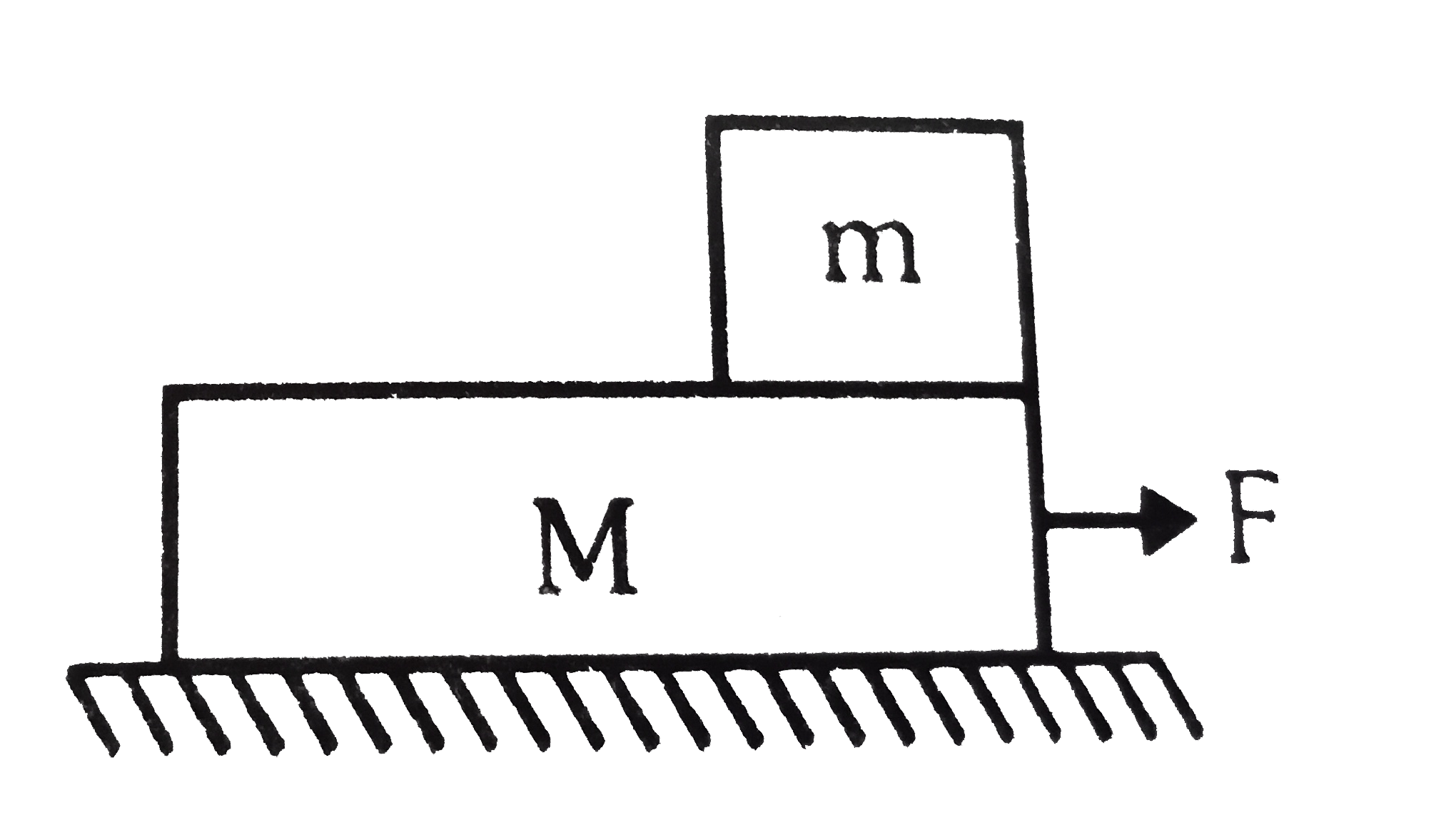Two opposite forcesF1=120N and F2=80N act on an elastic plank of modulus of elasticity Y=2x1011N/m2 and length l=1m placed over a smooth horizontal surface. The cross-sectional area of the plank is S=0.5m2. The change in length of the plank is x×10−11m. Find the value of x.
A. 100
B. 150
C. 200
B. 1.1
The correct Answer is:A
To solve the problem, we will use the formula for Young's modulus and the relationship between stress, strain, and change in length. Here are the steps:
Step 1: Calculate the net force acting on the plank
The net force F acting on the plank is the difference between the two forces:
F=F1−F2=120N−80N=40N
Step 2: Calculate the stress on the plank
Stress σ is defined as force per unit area:
σ=FS
Substituting the values:
σ=40N0.5m2=80N/m2
Step 3: Calculate the strain in the plank
Strain ϵ is defined as the change in length per unit length:
ϵ=Δxl
Where Δx is the change in length and l is the original length of the plank.
Step 4: Relate stress and strain using Young's modulus
Young's modulus Y is defined as the ratio of stress to strain:
Y=σϵ
Rearranging gives:
ϵ=σY
Step 5: Substitute the values into the strain formula
Substituting the values of stress and Young's modulus:
ϵ=80N/m22×1011N/m2=4×10−10
Step 6: Calculate the change in length Δx
Now we can find Δx using the strain:
Δx=ϵ⋅l=4×10−10⋅1m=4×10−10m
Step 7: Express Δx in the required form
The problem states that the change in length is x×10−11m. We can express our result as:
Δx=40×10−11m
Thus, x=40.
Final Answer
The value of x is:
40
The net force F acting on the plank is the difference between the two forces:
F=F1−F2=120N−80N=40N
Stress σ is defined as force per unit area:
σ=FS
Substituting the values:
σ=40N0.5m2=80N/m2
Strain ϵ is defined as the change in length per unit length:
ϵ=Δxl
Where Δx is the change in length and l is the original length of the plank.
Young's modulus Y is defined as the ratio of stress to strain:
Y=σϵ
Rearranging gives:
ϵ=σY
Substituting the values of stress and Young's modulus:
ϵ=80N/m22×1011N/m2=4×10−10
Now we can find Δx using the strain:
Δx=ϵ⋅l=4×10−10⋅1m=4×10−10m
The problem states that the change in length is x×10−11m. We can express our result as:
Δx=40×10−11m
Thus, x=40.
The value of x is:
40
Similar Questions
A uniform elastic plank moves over a smooth horizontal plane due to constant force F0 distributed uniformly over the end face. The surface area of the end face is equal to A and Young.s modulus of the material is Y. Find the compressive strain of the plank in the direction of acting force.

View SolutionA solid cone of mass (m=1 kg) is placed on a plank of mass M =10 kg which is placed on a smooth horizontal plane. The coefficient of friction between cone and the plank is 1/4. If a horizontal force F is applied on the plank, then the maximum value of F for which the cone is in equilibrium with respect to plank if F>n where n is

View SolutionThe area of cross section of a steel wire (Y=2.0×1011N/m2) is 0.1cm2. The force required to double is length will be
View SolutionThe area of cross section of a steel wire is 0.1cm2. What is the force required to double it's length if Y=2×1011NM2?
View SolutionTwo opposite forces F_(1) = 120 N And F_(2) = 80 N Is employed on a heavy board. The elasticity coefficient of the frames y = 2 xx 10^(11) N //m^(2) And the length is L = 1m and it is placed on a horizontal surface without friction. Transverse cut area of planks A= 0.5 m^(2) is. If the length of the frame changes x xx 10^(-9) m If x, then find x -
View SolutionA block of mass 5 kg is placed on a plank of mass 10 kg which is placed on the smooth horizontal surface as shown in figure. If a 100 N force is applied on the plank then the acceleration of the plank wrt ground is (Coefficient of friction between block and plank mu_s= mu_k=0.4 and g = 10 m/s^2 )
View Solution3 xx 10^(-6) m^2 The area of the cross section and the length of a wire with a length of 4 m increases by applying force in the direction of length. Young modulus of the wire mass 2 xx 10^(11) N/m^2 If so, find the elastic potential energy stored in the wire.
View SolutionA block of mass'm' it kept over the smooth surface of the plank of mass M. the plank of length l is kept over the smooth horizontal surface. A constant horizontal force F is applied onto the plank as shown in figure. Calculate the time after which the block falls off the plank?

View Solution
